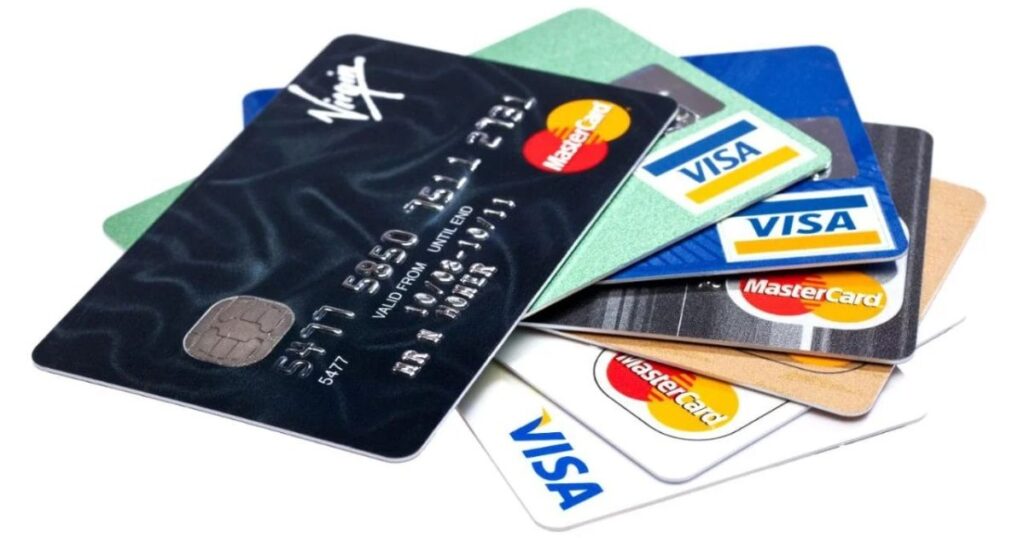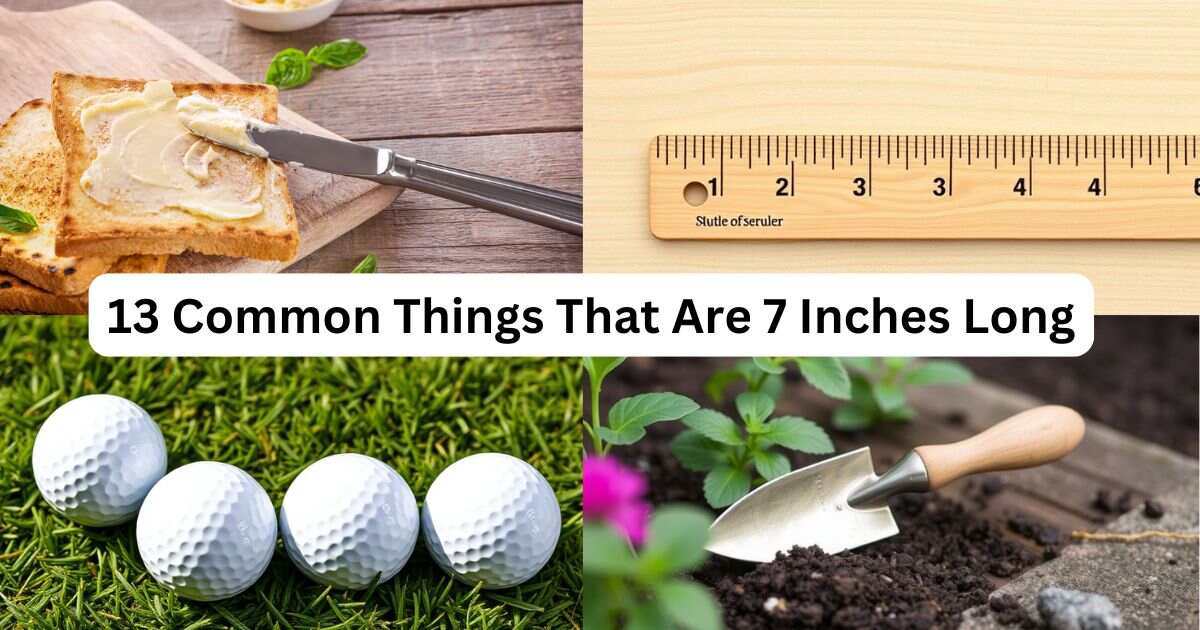Ever wondered how long 7 inches really is? Whether you’re working on a DIY project, measuring for home improvement, or just need a quick reference, knowing common items that measure 7 inches can be incredibly helpful. Let’s explore these everyday objects that can serve as practical measuring tools when you don’t have a ruler handy.
How Long is 7 Inches?
In precise terms, 7 inches converts to approximately 17.8 centimeters or 177.8 millimeters. This measurement equals roughly 0.58 feet, making it a convenient size for many everyday items. Understanding these length conversions helps in various situations, from crafting to cooking.
For professionals and hobbyists working with international measurements, this size falls into a sweet spot that’s neither too small nor too large. Whether you’re planning a woodworking project or organizing your workspace, having a clear mental picture of this length proves invaluable.
Many common household objects can serve as reliable references for this measurement. Let’s explore these items that can help you estimate 7 inches when traditional measuring methods aren’t available.
1. Small Banana

A typical small banana measures approximately 7 inches in length from tip to tip. This fruit serves as a readily available measuring reference in most households, though sizes can vary slightly between varieties and growing conditions.
Professional chefs and food photographers often select bananas of this length for consistent presentation and portion control. The gentle curve of a banana adds an interesting dimension to measurement, teaching that straight lines aren’t the only way to measure length.
Understanding standard banana sizes also helps in grocery selection and meal planning, where consistency in portions matters for both presentation and nutrition.
2. Small Garden Trowel

The garden trowel measuring 7 inches represents an ideal size for detailed gardening work and container planting. This length provides optimal control while allowing sufficient depth for most planting tasks.
Professional gardeners often prefer this size for its versatility in both indoor and outdoor applications. The standardized length helps maintain consistency when planting bulbs or transferring seedlings.
These tools combine practical functionality with precise measurements, making them valuable references for various gardening projects.
3. 7 US Quarters

When lined up edge to edge, 7 US quarters create a length very close to 7 inches. Each quarter measures exactly 0.955 inches in diameter, making the total length approximately 6.7 inches.
This method proves particularly useful since quarters are widely available and standardized in size. They’re perfect for quick measurements when precision isn’t critical.
The slight deviation from exactly 7 inches makes little difference in most practical applications, and the ease of finding quarters makes this an excellent impromptu measuring solution.
4. Butter Knife

The standard butter knife typically measures between 6.5 to 7 inches, making it another reliable reference point for this length. These utensils maintain consistent sizing across manufacturers due to practical dining considerations.
Their familiar presence in every kitchen makes them convenient measuring tools. The blade portion usually accounts for about half the total length, providing an additional reference point for smaller measurements.
The durability and standardization of butter knives make them excellent permanent reference tools for various household measurements.
Read more: How Long is 12 Inches?
5. Wooden Ruler Section

A standard wooden ruler typically features clearly marked 7-inch segments, making it an excellent reference point. These segments often align with natural breaks or different colored sections on educational rulers.
Teachers frequently use this measurement as a starting point for introducing students to the concept of standard measurements. The durability and clarity of wooden rulers make them reliable long-term reference tools.
This common classroom item serves both as a measuring device and a benchmark for understanding similar lengths in everyday objects.
6. Debit or Credit Cards

Credit cards and debit cards follow standardized dimensions across financial institutions worldwide. While a single card measures approximately 3.375 inches in length, placing two cards end-to-end creates a length slightly over 6.7 inches.
This measurement method proves particularly useful since most people carry these cards regularly. The consistent manufacturing standards ensure that cards from different banks maintain identical dimensions, making them reliable measuring tools.
For quick estimations, using cards as a reference point works exceptionally well, especially when measuring items related to wallets, pouches, or small containers.
7. Smartphone

Modern smartphones have grown increasingly larger, with many flagship models approaching the 7-inch mark. The iPhone 15 Pro Max, for instance, measures approximately 6.7 inches in length, making it a convenient reference point.
This slight difference of 0.3 inches is negligible for most practical purposes, and the ubiquity of smartphones makes them perfect impromptu measuring tools. Their standardized sizes across models provide consistent reference points.
Most current generation smartphones fall within the 6.6 to 6.9 inches range, offering a reliable estimation tool that’s always in your pocket.
8. Crayons

Standard crayons measure approximately 3.5 inches in length when new. Placing two crayons end-to-end creates a nearly perfect 7-inch measurement, making them excellent tools for educational purposes and craft projects.
These common art supplies maintain consistent sizing across major manufacturers, ensuring reliable measurements. Their widespread availability in schools and homes makes them particularly convenient for quick measurements during creative activities.
Teachers often use crayons as practical tools to introduce young students to the concept of measurement, combining learning with familiar objects they use daily.
9. 4 Golf Balls

Standard golf balls have a diameter of 1.68 inches as regulated by professional golfing associations. When four balls are placed in a line, they create a length of approximately 6.72 inches.
This measurement method proves particularly useful on the golf course or in sporting environments where traditional measuring tools might not be readily available. The standardization of golf ball dimensions ensures consistent measurements across different brands.
While slightly shorter than 7 inches, this difference is minimal for most practical purposes, making golf balls reliable reference tools.
10. Standard Pencil

The standard pencil length typically measures exactly 7 inches before sharpening, making it one of the most precise references on our list. This standardization dates back to manufacturing practices established for classroom and office use.
Professional artists and writers often use this length as a comfortable standard, allowing for optimal balance and control during use. The consistent size across brands makes pencils particularly reliable for measurement purposes.
When paired with other common items like rulers and protractors, pencils serve as excellent tools for teaching measurement concepts in educational settings.
11. Width of iPad 7th Generation

The 7th generation iPad features a width of approximately 6.8 inches, making it another excellent reference point for measurements near 7 inches. This dimension has become a standard in tablet design, balancing screen size with portability.
Apple’s precise manufacturing ensures consistent measurements across all units. The device’s rectangular shape makes it particularly useful for measuring straight lines or spaces.
While primarily designed for digital tasks, this tablet’s standardized dimensions make it a convenient measuring tool when other options aren’t available.
12. Essential Uses for 7-Inch Measurements

Understanding common 7-inch objects helps in various practical applications. From home projects to professional work, this measurement frequently appears in specifications and requirements.
Craftspeople often use this length as a standard for various components and materials. In cooking, many recipe ingredients are cut to approximately this length for consistent cooking times and presentation.
This size also proves crucial in electronic device design, where component spacing and ergonomic considerations often revolve around similar measurements.
13. Kitchen Knife

Professional kitchen knives often come in 7-inch variants, perfectly suited for various cooking tasks. This size represents an optimal balance between control and cutting power, making it a popular choice among both home cooks and professionals.
The blade length, excluding the handle, typically measures exactly 7 inches in these models. This standardization helps chefs maintain consistency in their cutting techniques and food preparation.
These knives serve double duty as both cooking implements and reliable measuring references in the kitchen environment.
Read more: How Long is 10 Inches?
Educational Uses of Common Measurements
Teaching measurement concepts using everyday objects helps students develop practical estimation skills. Educational institutions often incorporate common household items into mathematics and science curricula.
Professional educators use these measurement references to demonstrate real-world applications. This approach helps students connect abstract concepts with tangible examples.
Understanding measurement relationships improves problem-solving abilities across various disciplines.
Additional Practical Applications
Understanding 7-inch measurements proves valuable across various professional fields, from construction to design. This length often represents a sweet spot for tool ergonomics and practical applications.
Modern technology has introduced digital measuring tools, but knowing common object references remains invaluable. These everyday items provide quick estimations when precision tools aren’t available.
The versatility of 7-inch measurements in different industries showcases its importance in standardized sizing.
Measurement Accuracy Considerations
While these everyday items provide convenient references, it’s important to note slight variations may exist. Manufacturing tolerances and wear can affect exact measurements over time.
For projects requiring precise measurements, always verify with proper measuring tools like rulers or tape measures. These common objects serve best as quick reference guides rather than exact measuring devices.
Understanding these limitations helps maintain appropriate expectations when using everyday items for measurement estimation.
Conclusion
Having multiple reference points for 7-inch measurements proves invaluable in daily life. Whether you’re working on craft measurements, home improvement projects, or need quick estimations, these common objects serve as reliable measuring tools.
Remember that while these items provide good approximations, use proper measuring tools when precision is crucial. The convenience of these everyday objects makes them excellent alternatives for quick references and estimates.
By familiarizing yourself with these common 7-inch items, you’ll always have a reliable way to estimate measurements, even without traditional measuring tools at hand.











